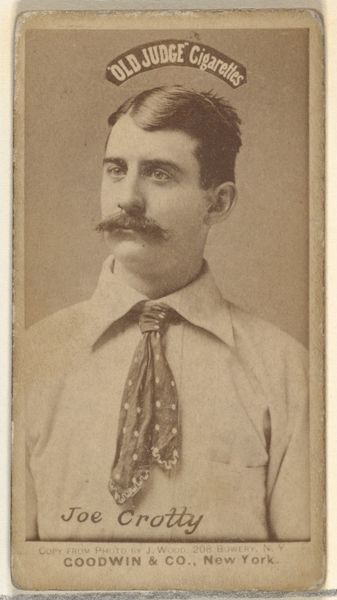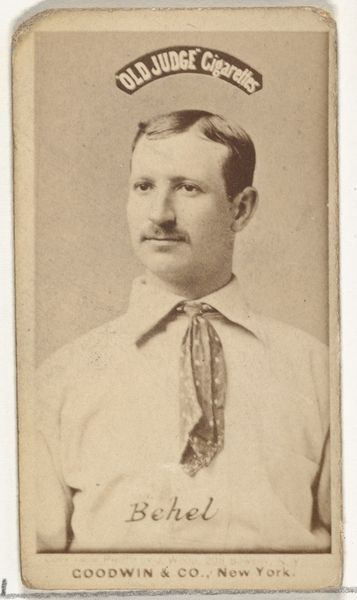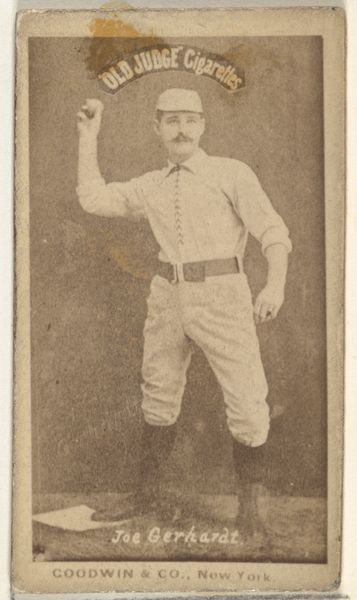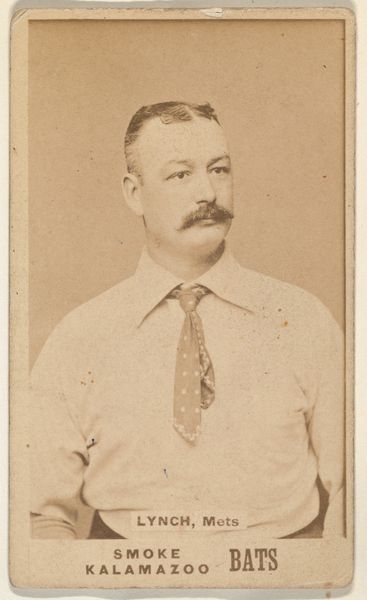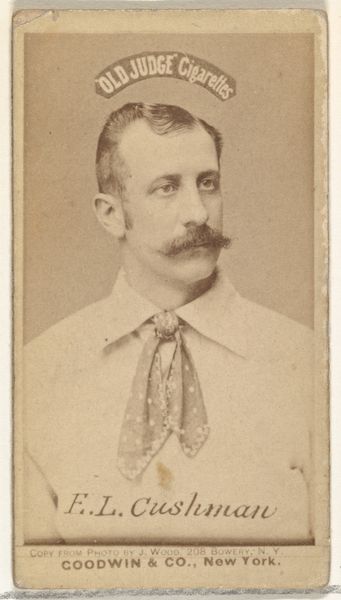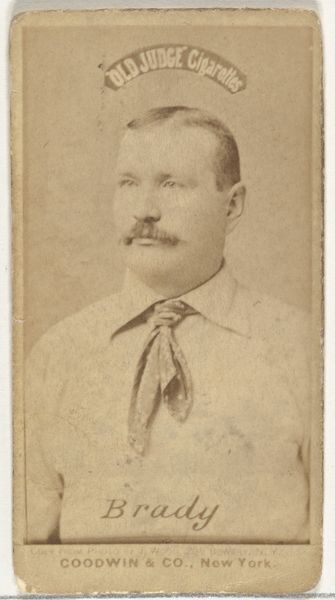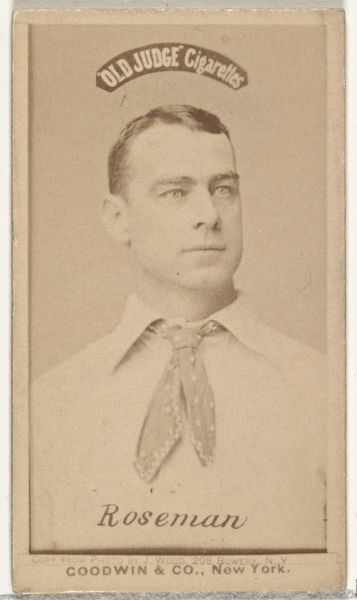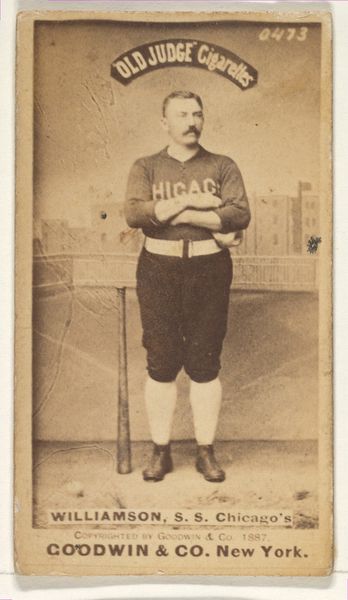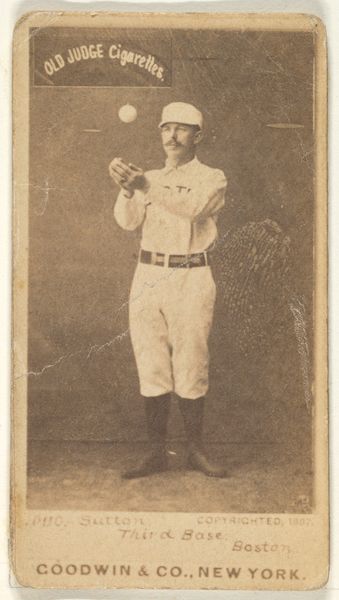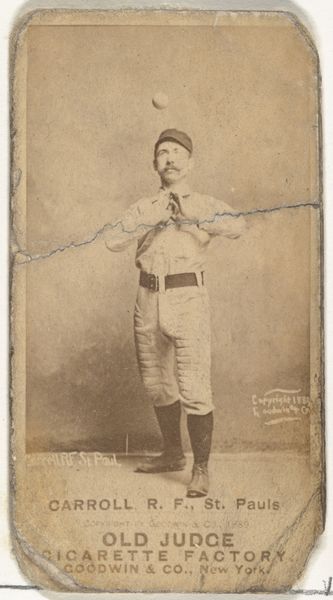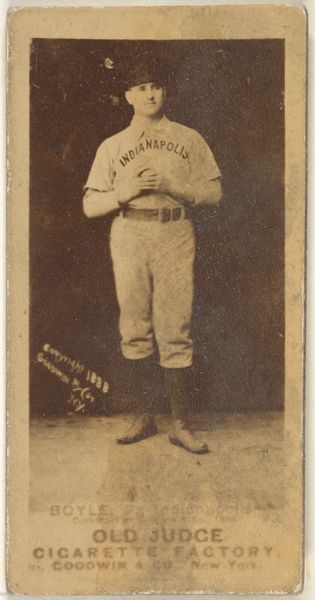
Pfeffer, 2nd Base, Louisville, from Mayo's Cut Plug Baseball series (N300) 1895
0:00
0:00
drawing, print, photography
#
portrait
#
drawing
# print
#
baseball
#
photography
Dimensions: Sheet: 2 13/16 × 1 5/8 in. (7.2 × 4.1 cm)
Copyright: Public Domain
Curator: Here we have "Pfeffer, 2nd Base, Louisville," a baseball card from the N300 Mayo’s Cut Plug Baseball series, printed around 1895. It's currently housed at the Metropolitan Museum of Art. Editor: My first thought is how serious and almost severe the player looks. The sepia tone lends this grave weight to the portrait—an icon of early sports culture. Curator: Indeed. These cards weren't exactly conceived as high art, more so, inexpensive promotional inserts produced by P.H. Mayo & Brother for their chewing tobacco products. It reveals the intimate relationship between leisure, advertising, and the widespread distribution of images at the turn of the century. The printing process would've involved photolithography to create affordable multiples. Editor: I am immediately drawn to the text superimposed on the image: "Louisville" boldly across the chest and the slogan "For Chewing and Smoking" underneath his name. This placement isn't random. In fact, tobacco brands routinely used athletes like Pfeffer as cultural symbols of virility and achievement. They equate their product to winning and good health. Curator: Yes, and consider how this card itself became a commodity. A product, wrapped around another product—chewing tobacco. The baseball player is part of a much larger web of manufacture and distribution—he's just another piece of merchandise. The paper quality too points to how readily consumable this imagery was. It's about circulation. Editor: Precisely. And consider how the sepia-toned photograph also evokes a particular type of nostalgia. A desire for a seemingly simpler time, linked tightly with early sports mythology. His dark tie and pressed shirt almost recall those images of President Lincoln. It shows a time of the development of a sports aesthetic for this nation. Curator: Right, so this isn't just a snapshot of a baseball player; it's evidence of manufacturing, advertising, distribution and consumer culture. Even the damage visible on the edges adds another layer to the story of its long life. Editor: In conclusion, through symbols like Pfeffer himself, the team name Louisville, the chewing tobacco brand, this object carries rich memories about masculinity, sports, health, and early media, and speaks volumes about our desires through idealized athletes.
Comments
No comments
Be the first to comment and join the conversation on the ultimate creative platform.
